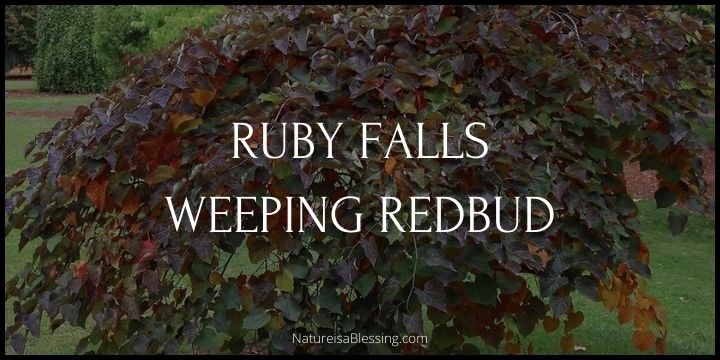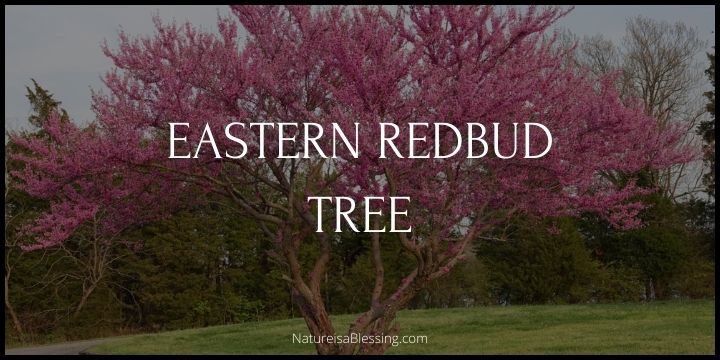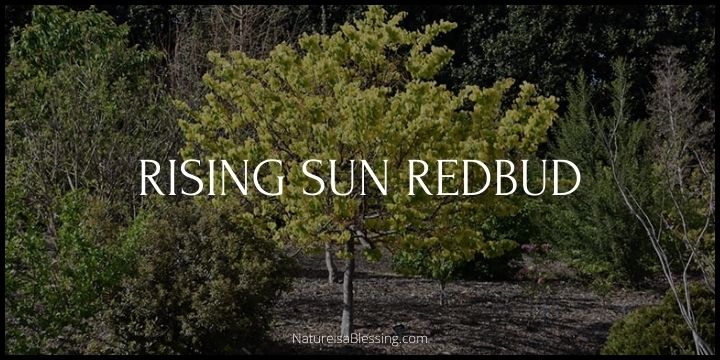Dogwood Trees: How to Plant, Grow, and Care

What is Dogwood Tree?
The Dogwood tree, scientifically known as Cornus Florida, is a deciduous tree native to North America. It’s part of the Cornaceae family and is widely recognized for its beauty across different seasons.
In spring, the Dogwood tree is famous for its white or pink flowers that add a splash of color to landscapes. These are not true flowers but are actually bracts, a kind of modified leaf. The true flowers are small and yellowish-green, located in the center of the bracts.
Following the bloom, the tree produces bright red berries during the summer, which are a food source for many bird species. In the fall, Dogwood trees offer another burst of color when their leaves turn to vibrant shades of red and purple.
The bark of the Dogwood tree is also distinctive, appearing as broken plates on older trees. Dogwood trees typically grow 20-30 feet tall and wide, making them excellent choices for residential yards. They prefer well-drained soil and partial shade to full sun exposure.
Dogwoods have been used historically for a variety of purposes. Their hard, dense wood was valued by Native Americans for making certain tools, and various parts of the plant were used in traditional medicine. Today, they are primarily appreciated as ornamental trees for their year-round appeal.
Fast Facts About Dogwood Tree
| Attribute | Description |
|---|---|
| Common Name | Dogwood |
| Botanical Name | Cornus Florida |
| Family | Cornaceae |
| Plant Type | Deciduous tree |
| Genus | Cornus |
| Mature Height | Typically ranges between 20-30 feet, but can reach up to 40 feet in ideal conditions. |
| Mature Width | The tree canopy can spread out to around 20-30 feet at maturity. |
| Sun Exposure | Prefers partial shade but can tolerate full sun if kept well-watered. |
| Soil Type | Thrives in well-drained soil that is rich in organic matter. |
| Soil pH | Prefers slightly acidic to neutral soils (pH 6.0 – 7.0). |
| Soil Drainage | Requires well-drained soil, it doesn’t do well in overly wet conditions. |
| Bloom Time | Flowering occurs in early to late spring, depending on the climate and specific variety. |
| Hardiness Zones | Best suited for USDA hardiness zones 5-9. |
| Maintenance | Low maintenance, requires regular watering and occasional pruning to maintain shape. |
| Water Needs | Moderate, needs more water during dry spells and less in rainy seasons. |
| Native Area | Native to North America, particularly the eastern United States. |
| Drought Tolerance | Moderate drought tolerance; it can withstand short periods of dry conditions but prefers consistent moisture. |
| Characteristics | Known for its beautiful white or pink flowers that bloom in spring, followed by bright red berries in summer and vibrant red-purple leaves in fall. The bark is also distinctive, appearing as broken plates on older trees. |
The Ultimate Care Guide for Dogwood Trees
Dogwood trees are a sight to behold, especially during their blooming period. However, like any other plant, they require specific care and attention. This guide aims to provide you with all the necessary information you need to ensure your Dogwood tree thrives.
Ideal Environment
- Soil Requirements: Dogwoods prefer well-drained soil that’s rich in organic matter. The soil pH should be slightly acidic to neutral (pH 6.0 – 7.0). If your soil is alkaline, consider adding sulfur or peat moss to increase its acidity.
- Watering Needs: These trees require moderate watering. Water them deeply once or twice a week, allowing the soil to dry out slightly between watering. During dry spells, they may need more frequent watering.
- Sunlight Exposure: Dogwoods thrive best under partial shade but can tolerate full sun if kept well-watered.
Pruning Techniques
Pruning helps maintain the tree’s shape, encourages healthy growth, and helps manage diseases. Here’s how to do it:
- When to Prune: The best time to prune a Dogwood tree is in late fall or winter when the tree is dormant. Avoid pruning during the spring, as this is the tree’s flowering season.
- How to Prune: Remove dead, dying, or diseased branches first. Then, trim back branches that cross each other or seem overcrowded. Always make clean, sharp cuts close to the trunk or a main branch.
Mulching, Fertilizing, and Pest/Disease Management
- Mulching: Apply a 2-3 inch layer of mulch around the base of the tree to help retain moisture, regulate soil temperature, and suppress weeds. Keep the mulch a few inches away from the trunk to prevent rot.
- Fertilizing: In general, Dogwoods don’t require much fertilization. However, if your soil is poor, consider a slow-release, balanced fertilizer in late fall or early spring.
- Pest/Disease Management: Dogwoods can be susceptible to a range of pests and diseases like Dogwood anthracnose and powdery mildew. If you notice any signs of disease or infestation, consult with a local extension service or professional arborist for treatment options.
Planting and Supporting Growth
- When to Plant: The best time to plant a Dogwood tree is in the fall, which gives it time to establish roots before the hot summer season.
- Supporting Growth: During the first few years, water the tree regularly and prune sparingly, just enough to shape the tree and remove any dead or diseased wood.
Remember, every tree is unique and might require slightly different care based on its environment and specific needs. Regular observation and minor adjustments can ensure your Dogwood tree stays healthy and beautiful.
10 Essential Tips for Planting & Cultivating Dogwood Trees Efficiently
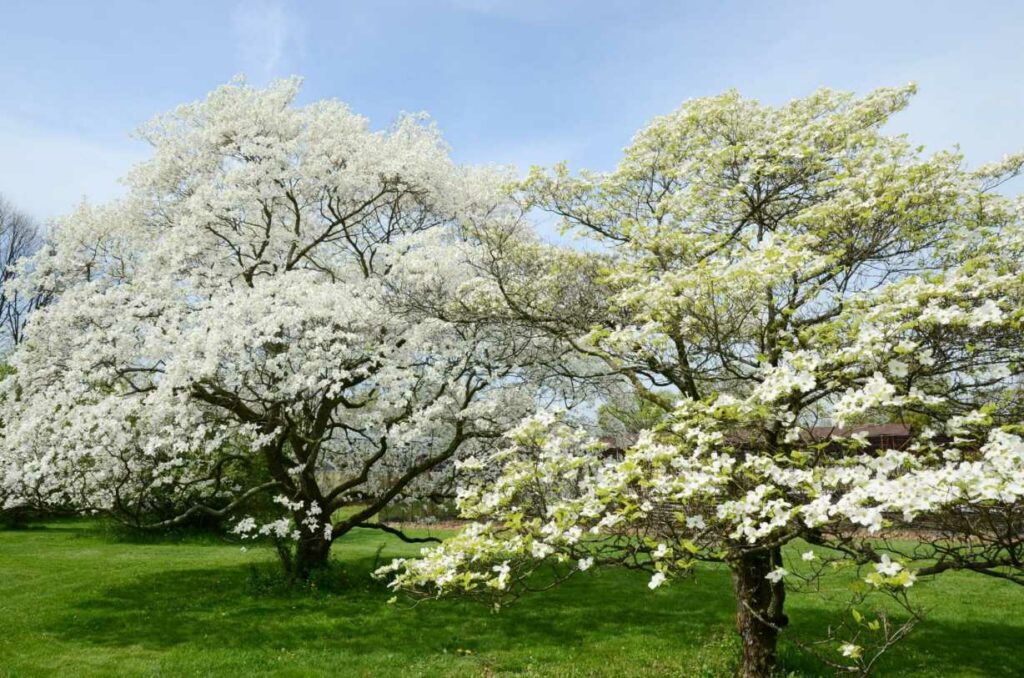
- Choose the Right Variety: Different varieties of Dogwood trees have different needs and characteristics. For example, the flowering dogwood (Cornus Florida) is native to North America and prefers slightly acidic soil, while the Kousa dogwood (Cornus Kousa) is native to Asia and can tolerate a wider pH range.
- Select the Right Location: Dogwoods prefer partial shade, so plant them near a larger tree or building that can provide afternoon shade. However, ensure they get some sun, as inadequate sunlight can lead to fewer flowers.
- Consider the Climate Zone: Dogwoods thrive in USDA hardiness zones 5-9. Make sure your location falls within these zones. If not, consider a variety better suited to your climate.
- Planting Depth: When planting your Dogwood tree, the hole should be two to three times wider than the root ball but no deeper. The top of the root ball should be level with or slightly above the surrounding soil to allow for settling and to prevent water from pooling around the base of the trunk.
- Watering Schedule: Water newly planted Dogwoods thoroughly and then once a week (more often in hot weather) during the first growing season. Once established, they can typically handle short dry spells but prefer consistent moisture.
- Fertilization: Generally, Dogwoods do not require much fertilization. However, if your soil is lacking in nutrients, an application of a slow-release, balanced fertilizer in late fall or early spring can help.
- Mulching: Apply a 2-3 inch layer of mulch around the tree (not touching the trunk) to help retain moisture, suppress weeds, and regulate soil temperature.
- Pruning: Prune your Dogwood in late fall or winter during dormancy. Remove dead, dying, or diseased branches first, followed by any that cross or rub against each other.
- Disease and Pest Management: Keep an eye out for signs of diseases like Dogwood anthracnose or pests such as the Dogwood borer. If spotted, consult with a local extension service or professional arborist for treatment options.
- Overall Maintenance: Monitor your tree’s health regularly. Look for changes in leaf color, unusual loss of leaves, or slow growth, which could indicate a problem. Regular care will help your Dogwood tree thrive for many years to come.
Note: patience is key when growing trees. It may take a few seasons before you see significant growth or flowering, but the wait will be worth it when you have a healthy, beautiful Dogwood tree enhancing your landscape.
What is special about Dogwood Tree?
- Distinctive Flowers: Dogwood trees are renowned for their beautiful and distinctive flowers. These “flowers” are actually bracts, or modified leaves, that surround the actual tiny, yellow flowers at the center. These bracts can be white, pink, or red, depending on the species.
- Four Seasons of Interest: Dogwoods provide visual interest all year round. In spring, they burst into bloom. In summer, their lush green foliage offers shade. In fall, the leaves turn to vibrant shades of red and purple. And in winter, the textured bark and horizontal branching add interest to the landscape.
- Size: With most varieties maturing at 15 to 30 feet, dogwoods are an ideal size for many yards. They’re not so large that they overpower landscapes, nor are they so small that they get lost.
- Wildlife Attraction: Dogwoods produce berries that attract birds and other wildlife, increasing the biodiversity in your garden.
- Versatility: Dogwoods can be used in various ways in landscaping, from specimen trees to plantings in woodland gardens or naturalized areas.
- Historical and Cultural Significance: The dogwood tree has deep historical and cultural roots. It’s the state tree of Missouri and the state flower of North Carolina and Virginia. It’s also a symbol of Christianity, with the legend that the cross on which Jesus was crucified was made from dogwood timber.
- Disease Resistance: Many modern cultivars have been bred for resistance to diseases, such as dogwood anthracnose, making them more resilient in the landscape.
What are the different types of Dogwood Trees and Shrubs?
| Type | Scientific Name | Description |
|---|---|---|
| Flowering Dogwood | Cornus florida | A native to the eastern U.S., this tree is known for its large white or pink flowers that bloom in spring. It grows from 15-30 feet. |
| Pacific Dogwood | Cornus nuttallii | Native to the west coast of North America, this tree can reach up to 40-50 feet and produces large white flowers. |
| Kousa Dogwood | Cornus kousa | This Asian variety blooms later than the flowering dogwood, with pointed petal-like bracts. It’s resistant to many diseases that affect other species. |
| Cornelian Cherry Dogwood | Cornus mas | This European species is more like a shrub. It has small, yellow flowers that bloom before leaves appear in spring. Produces cherry-like fruits. |
| Red Twig Dogwood | Cornus sericea | Known for its vibrant red branches, especially in winter. It’s a shrub that can reach up to 9 feet in height. |
| Silky Dogwood | Cornus amomum | This shrub has clusters of small white flowers, followed by blueberries. It’s often used for hedging and in rain gardens. |
| Pagoda Dogwood | Cornus alternifolia | Recognizable by its layered, pagoda-like branching structure. It has clusters of white flowers and blue-black berries. |
| Gray Dogwood | Cornus racemosa | This is a medium-sized shrub with white flowers and white fruit. It’s native to North America and attracts birds. |
| Roughleaf Dogwood | Cornus drummondii | Native to North America, this shrub or small tree has clusters of white flowers and white berries. It’s often used in restoration and erosion control. |
| Japanese Dogwood | Cornus kousa var. chinensis | A variety of Kousa dogwood from East Asia, this tree has pointed, pink bracts and produces edible berry-like fruits. |
10 Interesting Facts about Flowering Dogwood
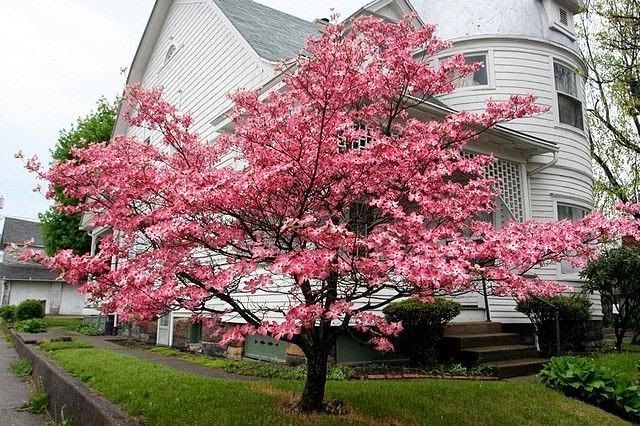
Flowering Dogwood (Cornus florida) is a popular ornamental tree known for its beauty and charm. Here are 10 interesting facts about it:
- Seasonal Beauty: The Flowering Dogwood is famous for its stunning display of flowers in spring, vibrant red-purple leaves in fall and bright red berries in winter.
- Not True Flowers: The white or pink “petals” that we often associate with the Flowering Dogwood are actually bracts, modified leaves that surround the actual tiny, greenish-yellow flowers clustered in the center.
- Native Tree: Flowering Dogwood is native to eastern North America, from southern Maine to northern Florida and west to Ontario and Texas.
- Size: These trees typically grow to be between 15 and 30 feet tall, making them a great choice for smaller landscapes.
- Symbolism: The tree has been associated with various symbolic interpretations, including Christianity where the tree’s flowering cross-shaped bracts have been linked to the crucifixion of Jesus.
- Wildlife Attraction: The berries of the Flowering Dogwood attract a variety of birds, including robins, cardinals, and waxwings. The tree also provides shelter for many species.
- State Tree: The Flowering Dogwood is the state tree of Missouri and the state flower of North Carolina and Virginia.
- Wood Usage: The wood of Flowering Dogwood is dense and fine-grained, making it desirable for making loom shuttles, tool handles, and other small items that require hard and strong wood.
- Threats: The tree is susceptible to a variety of diseases and pests, including Dogwood Anthracnose, a fungal disease, and the Dogwood Borer.
- Cultural Importance: Native American tribes used the tree’s bark and roots in traditional medicine, and its wood for making tools.
The pros and cons of Dogwood Tree
Advantages:
- Beauty Across Seasons: Dogwoods are known for their four-season interest. They boast beautiful flowers in the spring, lush green leaves in the summer, vibrant autumn foliage colors, and attractive bark and structure in winter.
- Wildlife Attraction: With their berries and flowers, dogwoods attract a variety of wildlife including birds, bees, and butterflies, adding to the biodiversity of your garden.
- Versatility: Dogwoods come in many forms, from trees to shrubs, making them versatile for different garden styles and sizes.
- Historical and Cultural Significance: The dogwood tree holds significant historical and cultural value, adding an element of interest to your garden.
- Size: Most dogwoods are medium-sized, making them suitable for urban and suburban gardens where space might be limited.
- Shade Tolerance: Dogwoods can tolerate shade better than many other flowering trees, allowing them to be planted in a variety of locations.
Disadvantages:
- Disease Susceptibility: Some species of dogwood, especially the native North American Cornus florida, are susceptible to a range of diseases including powdery mildew, leaf spot diseases, and dogwood anthracnose.
- Insect Pests: Dogwoods can be affected by a variety of insect pests such as dogwood borers and scale insects, which can cause damage to the tree.
- Care Requirements: Dogwoods require well-drained soil and prefer slightly acidic conditions. They may require regular watering during dry spells and protection from harsh winds.
- Sun Sensitivity: Although they can tolerate some shade, dogwoods grown in too much shade may not flower as abundantly. Conversely, those grown in full sun may experience leaf scorch.
- Lifespan: Dogwoods have a relatively short lifespan compared to other trees. They typically live for about 20-30 years under optimal conditions, but this can be much shorter if they are stressed by adverse conditions or diseases.
- Root System: Dogwood trees have a shallow root system which can make them more susceptible to toppling in high winds or severe storms. The roots can also potentially interfere with lawn mowing or other surface activities.
The Growth Rate & Mature Height of Dogwood Tree
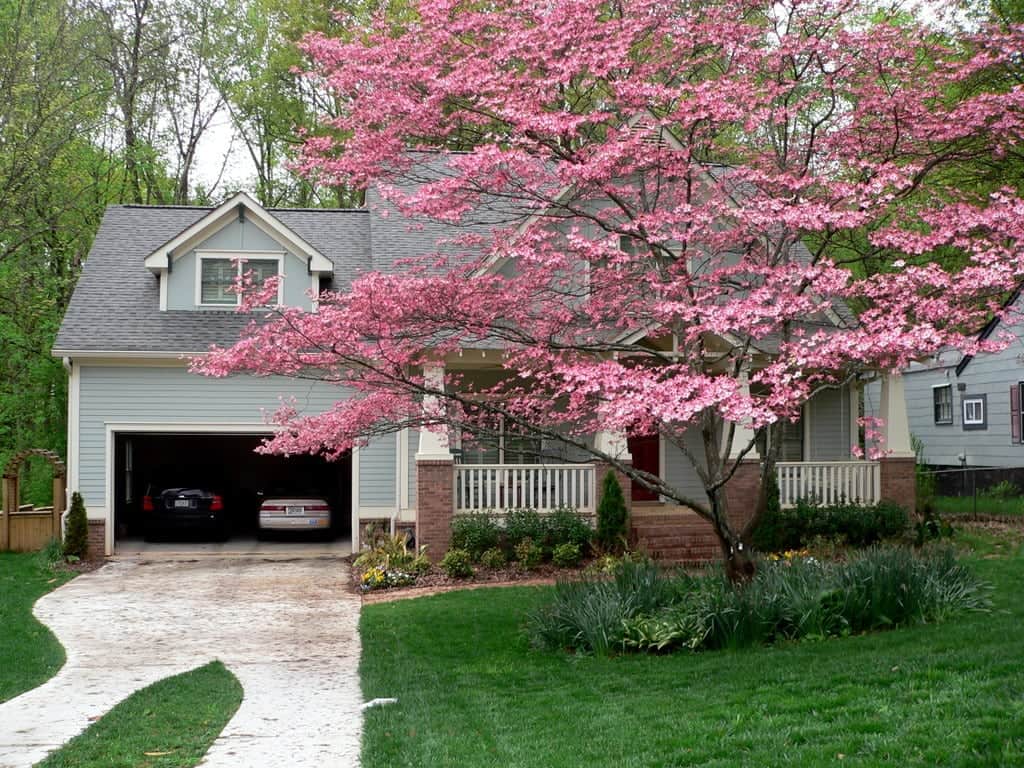
Flowering Dogwood (Cornus florida)
This is a native North American species known for its white or pink bracts. Its growth rate is moderate, typically adding 1 foot per year until maturity. It can reach a mature height of 15-30 feet.
Pacific Dogwood (Cornus nuttallii)
Native to the western United States, this tree has a slower growth rate, often less than 1 foot per year, reaching a mature height of 40-60 feet in ideal conditions.
Kousa Dogwood (Cornus kousa)
An Asian variety, it grows at a similar rate to the flowering dogwood, reaching a mature height of 15-30 feet.
Cornelian Cherry Dogwood (Cornus mas)
This European species grows at a moderate rate, reaching a mature height of 15-25 feet.
The growth rate of these species can be influenced by several factors including soil quality, sunlight, water availability, and pest or disease presence.
Mature Height and Pruning
Dogwood trees generally grow to a height of 15-30 feet, although some like the Pacific Dogwood can reach up to 60 feet. Pruning is an essential part of maintaining a dogwood’s height and promoting its health. The best time to prune is in late winter or early spring before new growth starts but after the threat of extreme cold has passed.
To maintain height, remove branches that are growing too high. If the tree is becoming too low or spreading, trim back the lower branches to the desired level. Always use sharp, clean tools to make clean cuts and avoid tearing the bark.
Why is it called Dogwood?
The name “Dogwood” comes from one of the early English names for the tree: “Dog-tree,” which was entered into written records by 1548. Over time, “Dog-tree” evolved into “Dogwood.”
While the exact origin of the name remains unclear, there are a few theories:
- Durability of the Wood: One theory suggests that the name Dogwood came from the term “dagwood,” with “dag” meaning skewer. This is because the wood of the tree is very hard and was used to make skewers, also known as “dags” or “dogs.”
- Medicinal Use: Another theory posits that the name originated from the tree’s bark, which was boiled to create a wash for mangy dogs.
- Misinterpretation: It’s also possible that the name is a corruption or misunderstanding of a similar-sounding name. For example, in old English literature, the tree is sometimes referred to as the “whippletree,” and it might have been mistakenly heard and transcribed as “Dogwood.”
Note: these are just theories and the true origin of the name “Dogwood” may never be definitively known.
What is the Dogwood Tree in Christianity?
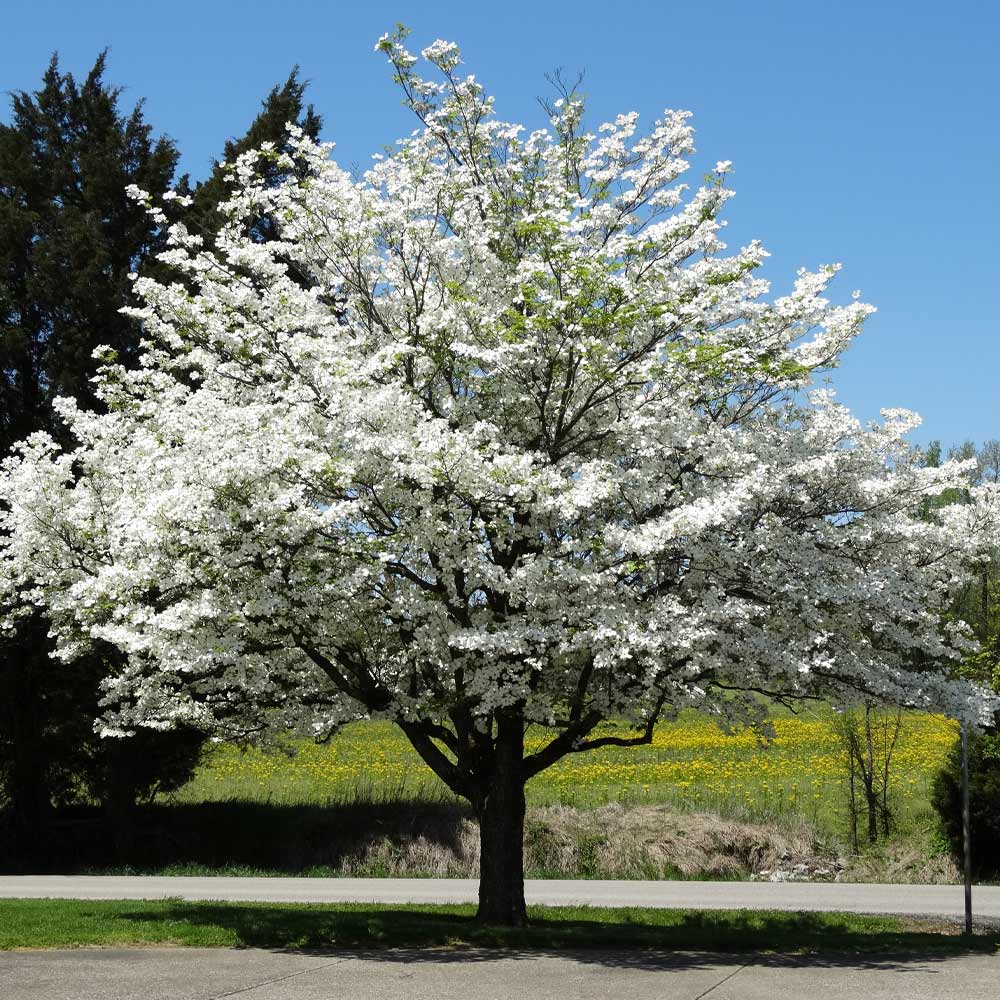
In Christian folklore, the Dogwood tree holds significant symbolic and historical importance. According to the legend, the Dogwood tree was chosen to provide the wood used for Jesus’ cross at the time of his crucifixion. The tree was said to be distressed by its role in such a tragic event, and Jesus, moved by the tree’s sorrow, promised it would never again grow large enough to be used for such a purpose.
From that point forward, the Dogwood tree is said to have grown with twisted branches and a thin, slender form, ensuring it could never be used to build a cross again. Additionally, when the Dogwood blooms each spring, the flowers form the shape of a cross, with two long petals and two short ones. At the edge of each petal, there are nail-like indentations — symbolic of the nails used during the crucifixion. The center of the flower is a green cluster symbolizing the crown of thorns placed on Jesus’ head.
It’s important to note that this story is purely symbolic and does not have a basis in biblical scripture. The Dogwood tree is not mentioned in the Bible, and the wood used for the cross is not specified in the biblical account. Furthermore, Dogwoods as we know them today did not grow in the Middle East during biblical times.
However, this legend has given the Dogwood a special place in many Christian traditions, especially around Easter, and it is often used as a reminder of Jesus’ sacrifice.
Where to buy Dogwood Tree?
- Lowe’s
- Arbor Day Foundation Shop
- The Tree Center
- Home Depot
- Amazon
- Fast Growing Trees
- PlantingTree
- Brighter Blooms
- Wilson Bros Gardens
- Bower & Branch
Note: availability may vary, and it’s always a good idea to check if they ship to your specific location.

Frequently Asked Questions
1. What is the maximum growth height of a Dogwood Tree?
Flowering Dogwood trees typically grow to a height of 15-30 feet, but in optimal conditions, they can reach up to 40 feet tall. The tree’s spread is usually around 20-30 feet. The growth rate is slow to medium, with height increases of less than 12 inches per year.
2. Is Dogwood Tree hardy?
Yes, many species of Dogwood trees are considered hardy. They can withstand cold temperatures and are generally resilient in a range of conditions. They are native to North America and are typically hardy from USDA zones 4 to 9, indicating they can endure minimum winter temperatures of -30 to 20 degrees Fahrenheit. However, the hardiness can vary between species.
For instance, the Kousa or Japanese dogwood (Cornus kousa) is hardy in USDA zones 5 to 8 and is known for its resistance to pests. On the other hand, the Flowering Dogwood (Cornus florida), while listed as hardy in zone 5, may not perform well in the northern half of that zone unless plants are selected from a northern seed source.
When planting a Dogwood tree, it’s recommended to choose a spot that offers dappled sunlight and has well-draining, slightly acidic soil.
3. Where is an ideal place to grow a Dogwood Tree?
Dogwood trees thrive best in a location that mimics their natural habitat. Here are some factors to consider when choosing the ideal place to grow a Dogwood tree:
- Light: Dogwoods can tolerate full sun, but they prefer partial shade. They naturally grow on the edges of forests, so dappled sunlight is ideal. Too much direct sunlight can cause leaf scorching, especially in hot climates.
- Soil: Dogwoods prefer well-drained, fertile soil that’s rich in organic matter. The soil should be slightly acidic (pH 6.0-7.0). They don’t do well in heavy clay or overly sandy soils.
- Moisture: Dogwoods need regular watering, especially during dry periods. However, they don’t like waterlogged soil. If you’re planting Dogwood in a particularly dry area, you may need to water it regularly.
- Space: Ensure there’s enough space for the tree to grow. Dogwoods usually reach a height and spread of 15-30 feet, so they need room to expand without crowding other plants or structures.
- Protection: Dogwoods are sensitive to harsh winds and extreme temperatures. Choose a location that offers some protection, such as near a building or among other trees.
- Climate: Dogwoods are hardy in USDA zones 5-9, meaning they can withstand winter temperatures down to -20 degrees Fahrenheit. Check your local USDA hardiness zone before planting.
4. Are dogwood trees messy?
Dogwood trees are generally not considered messy. They have a neat growing habit and the fruit is often retained on the tree rather than dropping, persisting through winter. However, some varieties may drop fruit in the fall, which could be seen as messy if there’s traffic under the tree. Mulching around the tree can help to mitigate this issue.
Despite this, their messiness is relatively minimal compared to many other types of trees. They are also not typically considered to have invasive root systems. Therefore, Dogwood trees are often a popular choice for those looking for a manageable and aesthetically pleasing tree.
Also read:
